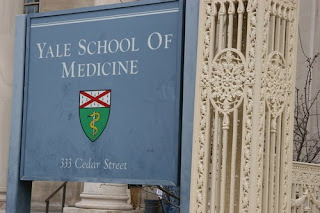In case potato chips lovers had no idea where their favorite salty snacks came from, America’s largest chip maker has launched a new ad campaign clearing up the confusion once and for all.
As explained by the New York Times this week (in the advertising section, not food, and rightly so) the ads appear to stem from recent concern over the high salt content and other nutritional challenges of the likes of Lay’s. To quote columnist Stuart Elliot, the campaign “is intended to help consumers think of Lay’s as a food rather than a snack” and is “centered on farmers who grow potatoes for the maker of Lay’s, the Frito-Lay unit of PepsiCo.”
Not to miss out on the current “love your local farmer” movement, the campaign features ads of regional farmers in local markets, along with an online “Happiness Exhibit” photo gallery at lays.com.
The Times describes why the stakes are so high. Lay’s is PepsiCo’s third best-selling product, second only to the company’s Pepsi-Cola and Mountain Dew brands. Total Lay’s sales topped $2 billion last year. Yet, growth is the key to continued success, and according to the Times:
Sales growth for Lay’s had slowed to less than 1 percent from 2005 to 2007, raising concern among executives at Frito-Lay as well as PepsiCo.
Surveys revealed that Frito-Lay had a perception problem on its hands. Apparently, a third of respondents thought the ingredients were “not real potatoes.” That’s when the marketing machine sprung into action. New ads were designed to convey the “three simple ingredients” in the main variety of Lay’s, called Lay’s Classic: potatoes, “all-natural” sunflower oil and “a dash of salt.”
The addition of farmers to the ad campaign is an aim, says Gannon Jones, vice president for portfolio marketing at Frito-Lay, “to put the hometown face on it, and the hometown face is our farmers.”
How touching. Funny the company didn’t put the “hometown face” of the local factory workers who pulverize the potatoes, and then douse the mixture in salt (more than a dash) along with many gallons of (“all-natural”) oil. Or the other numerous local factory workers who must work very hard turning those “simple ingredients” into fried chips. Then there are even more local factory workers on the assembly line where all of those many chips are put into bags. Hmmm.
Oh wait, they also left out the local factory workers who put the bags into boxes, seal the boxes and get them ready to leave the factories. And who can forget all the local truckers who have to drive the big trucks to the regional distribution centers before they can be delivered by yet other local truck drivers to all those local stores. Nope, just gonna focus on the local farmers. Wonder why?
I thought this local angle sounded familiar. Indeed, when Frito-Lay first tried to go the “Local Lay’s” route last year, there was plenty of skepticism to go around. (See for example, Frito-Lay Embraces Local Movement, But Movement Does Not Embrace Frito-Lay.)
Also, I was interviewed for this article in Ad Age at the start of the campaign and called it disingenuous then. (That was an understatement.) Here’s what else I had to say about it:
Let’s be honest: It’s processed junk food. It’s just companies scrambling to save themselves as they see the trend happening as people are waking up and getting a clue that maybe packaged food isn’t good for you.
Then I got the last word in that story:
They have factories all over the country so they’re locally processed? Give me a break. That’s hilarious. You might as well say ‘I rolled this cigarette in my backyard so it’s local.’
Sorry for recycling old quotes, but if it still works, why not?
Thanks to my esteemed colleague Marion Nestle who pointed me to this story. Her clever name for it? Farmwashing!























